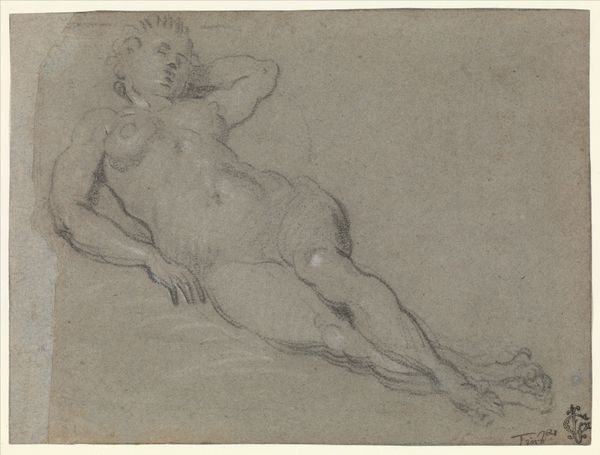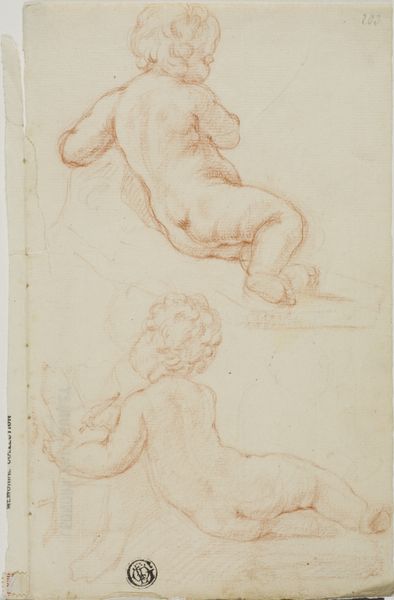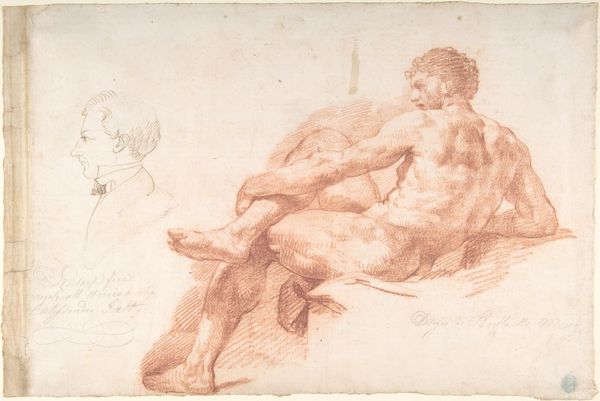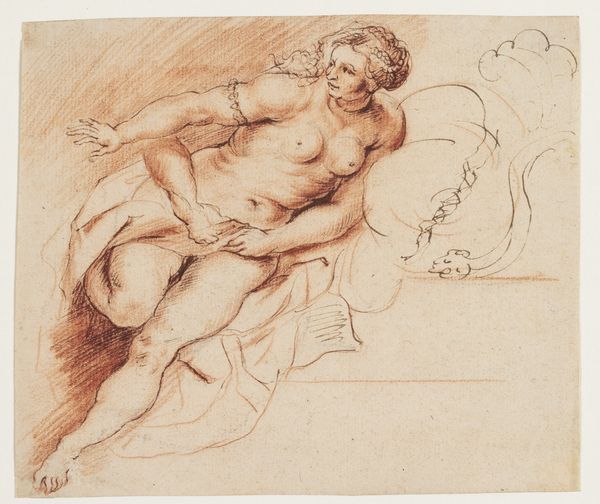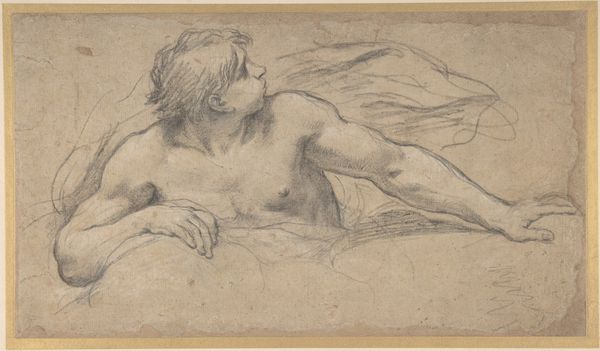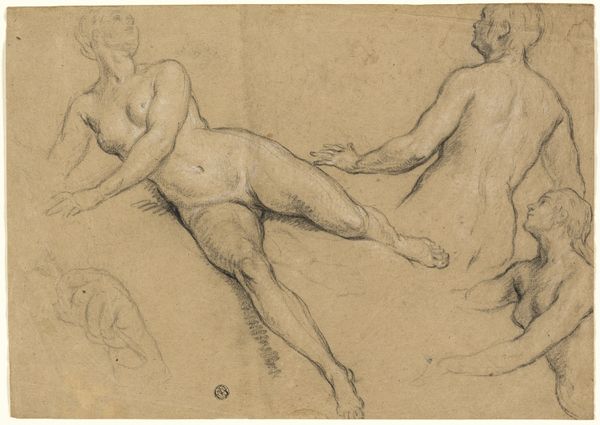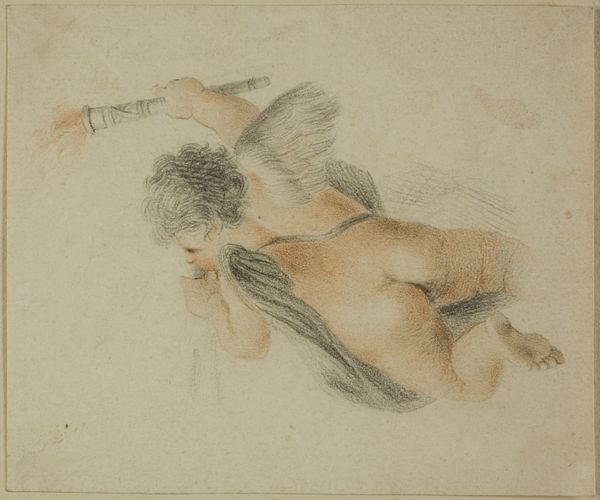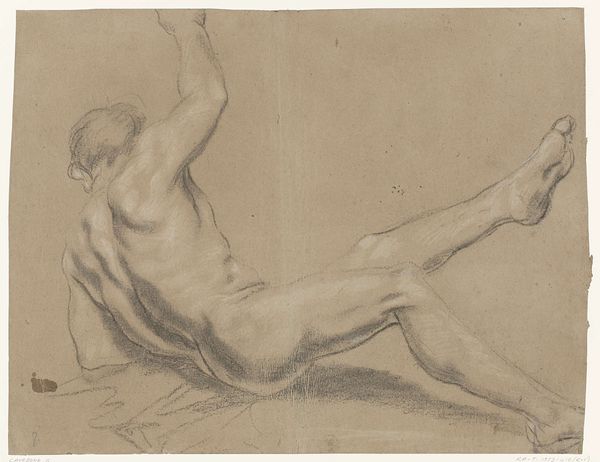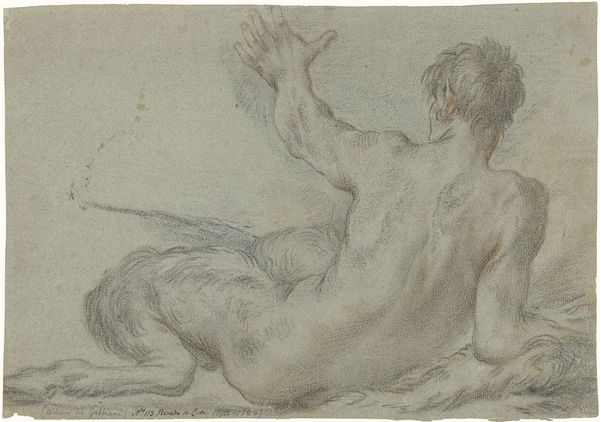
Dimensions: 251 × 281 mm
Copyright: Public Domain
Curator: Giovanni Battista Cipriani created this intriguing drawing, "Two Putti Fighting," sometime between 1747 and 1785. It's currently part of the Art Institute of Chicago's collection. My first impression is one of dynamism – the implied movement is wonderful. Editor: Absolutely. I’m immediately drawn to the way he’s used layered pencil and chalk on paper. The texture is key to understanding its appeal, because you can trace Cipriani’s evolving understanding through each mark on the page. There's this raw physicality in his method; how did the support influence the final result? Curator: Precisely. These sketches of cherubic figures were popular subjects during the Rococo era. It showcases the lighter side of aristocratic taste at the time. Considering how widely printmaking developed alongside these practices, Cipriani would likely make this kind of sketch in order for it to then be engraved, or otherwise disseminated as an etching or lithograph, so others could copy or learn from the methods he employed. Editor: Interesting point, but I’m really struck by what feels unfinished in this work. It isn’t just the aesthetic; seeing this level of detail mixed with quick strokes reveals something about the creative process, and perhaps something of the academic system the artist was immersed within, where students learned from quickly copying the Old Masters and the most famous sculptures. Look how the intense areas contrast with almost ephemeral areas—red chalk next to pencil outlining forms. This is raw creation, like peering into a workshop, from the inside. Curator: I think you've highlighted an important tension. While it displays a sense of immediacy, its composition adheres to academic ideals, and also fits within the era of “history painting.” In other words, this type of image would've offered people at the time another way of understanding how historical scenes could manifest across many medium, reaching the public via reproductive processes like etching and engraving. The putti embody both classicizing influence alongside lighthearted design and popular tastes. Editor: I find it very moving to contemplate the historical forces in action with this very intimate and physical way of constructing an image by hand using earthly material. These materials and gestures act as traces of their context and time, revealing something vital that remains immediate across generations. Curator: It seems Cipriani's delicate dance between form and the social history behind them continues to stimulate conversations. Editor: Definitely. His rendering of these squabbling figures is really about tangible processes of material expression.
Comments
No comments
Be the first to comment and join the conversation on the ultimate creative platform.

